Signed Narishige
Japan, Edo period (1603-1868)
Iron, lacquer, horsehair and fabric
H. 35; L 28 cm
In its original carrying case
Sômen are similar to portrait masks, covering the samurai's entire face to ensure both protection and intimidation of the enemy. Expressive features are deliberately accentuated to bring intensity to facial expression.
This Sômen Ressei mask is made of tripartite iron, with attached ears and an open mouth topped by a horsehair moustache. The chin part features an ase nagashi no ana to ventilate and evacuate liquids such as sweat, and the inside of the mask is entirely lacquered red to avoid any irritation of the warrior's skin. It is also fitted with a double-bladed lacquered gorgerin and a silk cloth protecting the head. While the gorgerin dates from the late Edo period, the mask was made in the middle of the Edo era - i.e. the late 17th or early 18th century.
The wooden carrying case is painted red with the mon “Maruni-mitsubaaoi” featuring a circle centered on three distinctly stemmed asaret leaves: the symbol of the Tokugawa clan.
As mempō are an integral part of Japanese samurai armor, this sômen was probably the weapon mask of a Tokugawa samurai.
Kosyu Tokubetsu Kicho Siryo certificate, Japanese Society for the Research and Preservation of Japanese Helmets and Armor.
On base.
Bibliography:
Sômen-type face protectors are preserved in major institutions such as the Metropolitan Museum of Art and the Barbier-Mueller collections.
Text and photos © FCP CORIDON
Ref.LP5393





















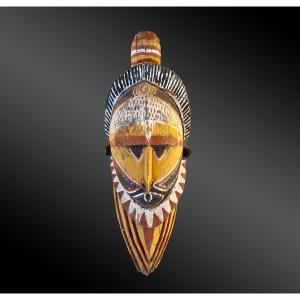

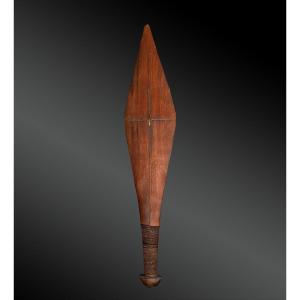

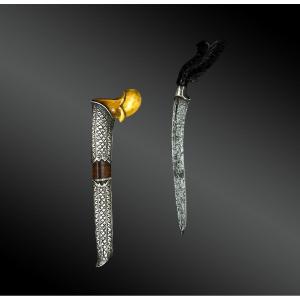


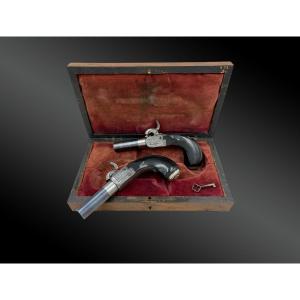

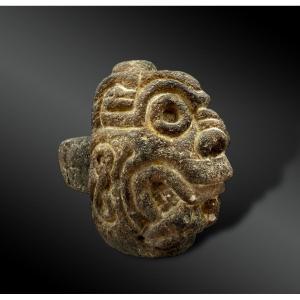



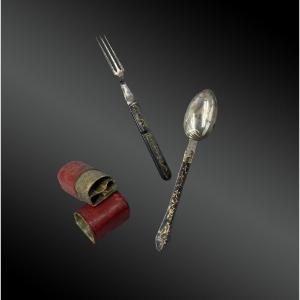

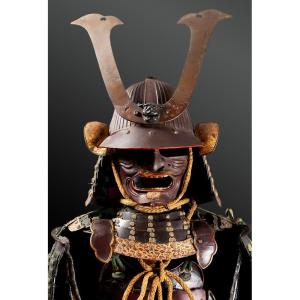







 Le Magazine de PROANTIC
Le Magazine de PROANTIC TRÉSORS Magazine
TRÉSORS Magazine Rivista Artiquariato
Rivista Artiquariato